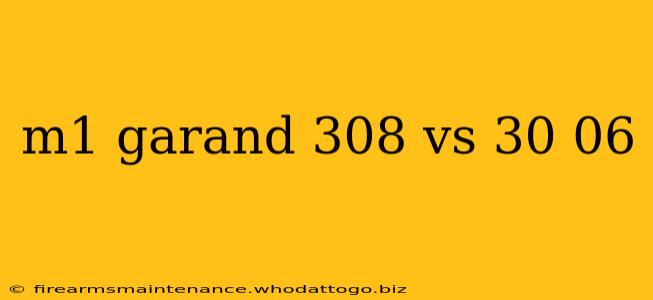The M1 Garand, a legendary semi-automatic rifle, is deeply ingrained in American military history. While originally chambered in .30-06 Springfield, the question often arises: how would it perform in the more modern 7.62x51mm NATO (.308 Winchester)? This comparison explores the ballistics, practical implications, and historical context of chambering the M1 Garand in both calibers.
Ballistic Differences: .30-06 Springfield vs. 7.62x51mm NATO (.308 Winchester)
The core difference lies in cartridge size and resulting power. The .30-06 Springfield is a significantly larger and more powerful round than the 7.62x51mm NATO. This translates to:
-
Muzzle Velocity: The .30-06 generally boasts a higher muzzle velocity, leading to a flatter trajectory and longer effective range.
-
Recoil: The increased power of the .30-06 results in more substantial recoil, potentially affecting accuracy and shooter comfort, especially for less experienced marksmen.
-
Stopping Power: Both cartridges offer potent stopping power, but the .30-06's larger projectile and higher energy generally deliver greater impact.
-
Penetration: The .30-06's higher velocity and energy result in greater penetration, particularly through barriers.
Table Summarizing Key Ballistic Differences:
| Feature | .30-06 Springfield | 7.62x51mm NATO (.308 Winchester) |
|---|---|---|
| Cartridge Size | Larger | Smaller |
| Muzzle Velocity | Higher | Lower |
| Recoil | Higher | Lower |
| Stopping Power | Generally Higher | High |
| Penetration | Generally Higher | High |
Practical Implications for the M1 Garand
Converting an M1 Garand to .308 would require significant modifications. The original design is optimized for the .30-06 cartridge. Simply changing the barrel would not suffice; the bolt face, magazine well, and potentially other internal components would need alterations. This conversion is complex, costly, and potentially impacts the rifle's reliability and longevity. Many gunsmiths wouldn't even attempt such a conversion due to the potential for damage to a historically significant firearm.
Furthermore, while reduced recoil might seem advantageous, the M1 Garand's operating system, based on the gas impingement system, is already relatively smooth-shooting. The recoil reduction offered by the .308 might be less significant than expected, potentially outweighing any other benefits.
Historical Context and Conclusion
The M1 Garand's design and its chambering in .30-06 were inextricably linked to the military requirements of its time. The .30-06 provided the necessary range and stopping power for the battles of World War II and beyond. While the 7.62x51mm NATO offers advantages in certain contexts, adapting the M1 Garand to this cartridge is impractical for the average owner. The cost, complexity, and potential negative effects on the rifle outweigh the modest ballistic gains.
The M1 Garand's legacy is firmly rooted in its original .30-06 chambering. Attempting to force it into a different caliber risks compromising the integrity and historical significance of this iconic firearm. For those seeking a more modern cartridge, plenty of other rifles are readily available, making a conversion unnecessary and even unwise.

